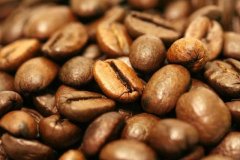Differences, distinctions and awards of single beans in Santa Rita Manor, Colombia

Professional barista communication, please pay attention to coffee workshop (Weixin Official Accounts cafe_style)
Colombia Santa Rita Estate Single Bean Differences, Distinctions and Awards
Breeds: Kaduai, Kadura
Manor: Santa Rita
The history of coffee cultivation in Colombia can be traced back to the Spanish colonial era in the sixteenth century. There are also many sayings about the history of coffee in Colombia:
One: it is said to have come from Haiti in the Caribbean via El Salvador in Central America.
Second: Coffee beans were first introduced into Colombia in 1808 by a priest from the French Antilles via Venezuela. One of them is that the first coffee seeds from Colombia came from Venezuela through the province of Santander.
Third: The earliest record of coffee cultivation in Colombia appears in a book entitled "The Illustrated Orinoca" by the Spanish missionary Jose Gumilla. He describes his travels on both sides of the Meta River in 1730, mentioning coffee plantations there. By 1787, other missionaries had spread coffee to other parts of Colombia.
Hand washed Colombia Santa Rita. 15g powder, medium grinding (small Fuji ghost tooth knife 4 grinding), v60 filter cup, 88-89 degrees water temperature, the first injection of 30g water volume, 27 seconds of stewing, injection to 105g water volume cut off water, wait for the powder bed water volume to drop to half, then inject water slowly until 225g water volume, tail section do not, water powder ratio 1:15, extraction time 2:00
Flavor: Sucrose, clean, medium body
Colombia, located in the northwest of South America, is a beautiful country with a long history. Indians have lived on this land since ancient times. It became a Spanish colony in 1531 AD and gained independence in 1819. It was renamed in 1886 to commemorate Columbus, the discoverer of the American continent. Colombia, beautiful mountains, beautiful scenery, pleasant climate, four seasons such as spring, fresh air. Colombia is rich in products, especially coffee, flowers, gold and emeralds known as the "four treasures." Today the country is the second largest coffee producer after Brazil, the world's largest exporter of Arabica coffee beans and the world's largest exporter of washed coffee beans. Often described as having a silky texture, Colombia coffee has the best balance of all coffees. It tastes soft, silky, and ready to drink, and it has earned a reputation that no other coffee can match: "green gold."
Caturra is a natural variant of the Arabica variety Bourbon, discovered in Brazil in 1937, and its tree is shorter than Bourbon. Due to the inheritance of Bourbon's bloodline, it has a weaker resistance, but its yield is higher than Bourbon's. Although found in Brazil, cadura is not suitable for growing in Brazil, so it is not widely cultivated in Brazil, but is widely cultivated in Central and South America, such as Colombia, Costa Rica and Nicaragua.
Perhaps you care more about the taste of kadura than about these botanical traits. The higher the elevation, the higher the quality, but the lower the yield. When Kadura is lightly roasted, the sour aroma is obvious, and the overall brightness is bright. Under proper treatment, the sweetness can be very good, but the alcohol content of coffee is relatively low compared with bourbon, and the cleanliness of the taste is a little lacking.
Kadura is usually a red berry, but there are rare areas where yellow kadura is grown, such as Hawaii, where yellow kadura is rarely grown.
Kaduai is an artificial hybrid of Kadura and Mondu Novo. Kaduai has a relatively good ability to resist natural disasters, especially wind and rain.
Kaduai trees are relatively low, and compared to other coffee trees, kaduai fruits grow stronger and are difficult to pick. The fruit is red and yellow. So far, yellow fruits have not been found to taste better than red fruits. On the contrary, some people found in the cup test that although the acidity of some yellow fruit processed coffee is good, the coffee taste is worse than that of red fruit.
Kaduai was cultivated in Brazil and is now commonly cultivated in Central America.
Factory Name: Qianjie Cafe Address: No.10 Baoan Qianjie, Yuexiu District, Guangzhou City Contact Information: 020-38364473 Ingredients List: Self-baked Shelf Life: 90 Net Content: 227g Packaging Method: Bulk Taste: Aromatic Coffee Bean Ripe Degree: Coffee Ripe Bean Sugar: Sugar-Free Origin: Colombia Coffee Type: Colombia Coffee Roasting Degree: Moderate Roasting
Colombia Santa Rita Special Reserve
Country: Colombia Country
Region: Antioquia
Altitude: 1600-2100 m
Treatment method: washing
Santa Rita Manor is located in Antioquia, Colombia, in a micro-region adjacent to the Andes. This premium coffee is produced by the collaboration of nine nearby farms. The nine farms still treat coffee in the traditional way: hand-picked cherries, then the coffee cherries are washed in the traditional way, and the treated coffee beans are placed in a trellis to dry in the sun. The surrounding environment of the Andes makes this coffee-growing area rich in volcanic soil and water resources.
Colombia coffee varieties are mainly small coffee. Plants are small trees or large shrubs, 5-8 meters high, usually multi-branched at the base; old branches are gray, nodes expand, young branches glabrous, compressed. Leaves thinly leathery, ovate-lanceolate or lanceolate, 6-14 cm long, 3.5-5 cm wide, apex long acuminate, acuminate 10-15 mm long, base cuneate or slightly obtuse, rarely rounded, entire or shallowly undulate, glabrous on both surfaces, with or without pits in axils of lower veins; midvein raised on both surfaces of leaf blade, lateral veins 7-13 on each side; petiole 8-15 mm long; Stipules broadly triangular, born at the top of the young branches conical long pointed or awned tip, born at the top of the old branches are often pointed, long 3-6 mm. Cymes several clustered in leaf axils, each inflorescence 2-5 flowers, without pedicel or with very short pedicel; flowers aromatic, pedicels 0.5-1 mm long; bracts more or less united at base, dimorphic, 2 broadly triangular, nearly equal in length and width, 2 lanceolate, 2 times as wide, foliaceous; calyx tubular, 2.5-3 mm long, calyx limb truncate or 5 denticulate; Corolla white, length varies with species, generally 10-18 mm long, apically often 5-lobed, rarely 4-or 6-lobed, lobes often longer than corolla tube, apically often obtuse; anthers protruding outside corolla tube, 6-8 mm long; styles 12-14 mm long, stigmas 2-lobed, 3-4 mm long. Berry broadly elliptic when ripe, red, 12-16 mm long, 10-12 mm in diam., exocarp dural, mesocarp fleshy, sweet; seeds raised abaxially, ventral plane, longitudinally grooved, 8-10 mm long, 5-7 mm in diam. Flowering March-April
[Santa Rita, Colombia](Wash Medium Deep Roast)-Sucrose, clean, medium bodied, Santa Rita Manor, located in Antioquia, Colombia, treats coffee in the traditional way: coffee cherries are picked by hand, then the coffee cherries are washed traditionally, and the treated coffee beans are placed in a trellis to dry in the sun. The surrounding environment of the Andes Mountains makes this coffee-growing area rich in volcanic soil and unique in water resources
Growing coffee also requires sunlight and proper shade, and is best done on fertile or volcanic ash soil. Therefore, coffee is widely distributed in South America, Central America, West Indies, Asia, Africa, Arabia, South Pacific and Oceania. Ethiopia and Tanzania in Africa, Brazil, Colombia, Jamaica, Guatemala, Mexico, Honduras and Costa Rica in Central and South America, Vietnam and Indonesia in Southeast Asia are all major coffee producing areas. In South America, Brazil accounts for 30-50% of the world's total production, while Colombia accounts for 10-20%.
Colombia Colombia
Population: 47,073,000
Colombia has well-defined growing areas and the impressive variety of coffee they produce. Whether you want round, heavy coffee or crisp, fruity coffee (or something in between), Colombia beans are most likely. Colombia is divided by geographical location, and it is not difficult to find that the coffee in this area has many common characteristics. If you like coffee in one area, other areas will like it as well. Coffee trees in Colombia get double ripening, the main harvest of the year and the second harvest, locally known as "mitaca."
CAUCA
CAUCA Cauca, among others, is best known for its coffee cultivation in Meseta de Popayan, which surrounds the cities of Inza and Popayan. The high altitude of the plateau provides favorable growing conditions, and the proximity to the equator and surrounding mountains protects coffee from the humidity of the Pacific Ocean and the southern trade winds. This creates a very stable climate all year round. In addition, coffee in this area has a significant volcanic soil. Historically, there has been a single rainy season from October to December.
Altitude: 1,700- 2,100 m
Harvest: March-June (main crop), November-December (mitaca crop)
TOLIMA
TOLIMA Tolima, one of the strongholds of Colombia's notorious rebel group, the Revolutionary Armed Forces of Colombia, held control until recently. Tolima has suffered from fighting in recent years, which makes visiting difficult. High quality coffee from the region comes from small farmers growing in very small microplots and exported through cooperatives.
Altitude: 1,200- 1,900 m
Harvest: March-June (main crop) Crops October-December (mitaca)
Variety: 9% Typica, 74% Caturra, 17% Castillo Vera
NARINO
Some of Colombia's highest quality coffees are grown in Nariño and are rated among the most stunning and complex. Growing coffee in many areas of these high-altitude areas is a challenge and coffee trees can suffer from leaf blight. However, Nariño is close enough to the equator that the climate is suitable for growing coffee trees. The vast majority of Nariño's 40,000 producers are smallholders, each growing less than 2 hectares (4.4 acres). Many people form groups and institutions to support each other and interact with the FNC. In fact, the average farm size is less than 1 hectare (2.2 acres), and only 37 producers own more than 5 hectares (11 acres) of land in the area.
Altitude: 1,500- 2,300 m (4,900- 7,500 ft)
Harvest: April-June Variety: 54% Typica, 29% Caturra, 17% Castillo
HUILA
Willa has a combination of excellent soil and geographical advantages for growing coffee, and some of the most complex, fruit-based Colombia coffee comes from here. There are more than 70,000 coffee growers in the area, covering more than 16000 hectares (39500 acres).
Altitude: 1,250- 2,000 m
Harvest: September to December (main crop) April to May (mitaca crop)
Main varieties: 11% Typica, 75% Caturra, 14% Castillo
By a particular combination of various factors, latitude, altitude, soil, plant origin of species and variety of coffee making in coffee growing areas of Colombia, climate in coffee growing areas and rain patterns resulting from dual paths of tropical convergence, changing topography throughout the day, luminosity, favorable temperature ranges throughout the year, distribution of moderate and rainwater, and some common cultural practices including selective harvesting and transformation processes, including washing and drying. Very suitable for coffee growth, mild climate, humid air, and can be harvested regardless of season. That's why Colombia coffee is so good. Colombia has three Cordillera mountains running north-south, right into the Andes. Coffee is grown along the highlands of these mountains. The terraces provide a diverse climate, with harvest seasons throughout the year and different types of coffee maturing at different times. And fortunately, unlike Brazil, Colombia doesn't have to worry about frost damage. Colombia has approximately 2.7 billion recorded coffee trees, 66 per cent of which are grown on modern plantations and the rest on small, traditionally managed farms
Vietnam in Asia now produces more coffee than Colombia, and Indonesia has grown to become the world's fourth-largest coffee producer. In 1721, Gabriel Mathieu de Clieu, a French naval officer, took the first coffee sapling from Africa to Martinique in Latin America. All these are the origins of coffee cultivation in Latin America. Because France was under Bourbon rule, Arabica coffee grown in Latin America took on another name that is still famous in the coffee industry today, Bourbon. Bourbon is now an important branch of Arabica coffee. The overall flavor of Latin American coffee is known for its balance, and all the flavors in coffee can be found in Latin American coffee. The widespread use of wet processing of green beans is also one of the characteristics of Latin American coffee. The good processing process also makes its bean type larger and more uniform than African coffee, and the defect rate is lower. Colombia is one of the largest high-quality coffee producers in the world. It is a shining pearl on the world coffee map and a coffee place blessed by God. Arabica coffee is grown on steep slopes in the foothills at altitudes of 800- 1900 meters, hand-picked and washed.
Colombia's favourable climate provides coffee with a true "natural pasture". Coffee trees in Colombia are mainly cultivated in the Andes mountains, on steep slopes up to 1,300 meters above sea level, where the annual temperature is about 18 degrees Celsius, the annual rainfall is 2000 to 3000 mm, the north latitude is 1 °-11 ° 15, the west longitude is 72 ° -78 °, and the specific altitude range can exceed 2.000 meters.
Important Notice :
前街咖啡 FrontStreet Coffee has moved to new addredd:
FrontStreet Coffee Address: 315,Donghua East Road,GuangZhou
Tel:020 38364473
- Prev

History, culture, stories and allusions of Panama's Elieta Manor Saint Boutique Single Bean
Professional barista exchanges, please pay attention to coffee workshop (Weixin Official Accounts cafe_style) Panama Ileta Manor Saint Boutique Bean History, Culture, Story RENACIMIENTO Renacimiento is a production area in Chiriqui province, bordering Costa Rica. The area itself is relatively small, so it is not Panama's main specialty coffee producing area.
- Next

Flavor characteristics, producing areas and cooking parameters of single bean in Santa Rita Manor, Colombia
For the exchange of professional baristas, please pay attention to the coffee workshop (Wechat official account cafe_style) Columbia Santa Rita Manor single bean flavor characteristics, producing areas and brewing parameters main varieties: 11% Typica 75% Caturraphia 14% Castillo by a special combination of various factors, latitude, altitude, soil, plant origin and production of species in the coffee growing area of Colombia.
Related
- Does Rose Summer choose Blue, Green or Red? Detailed explanation of Rose Summer Coffee plots and Classification in Panamanian Jade Manor
- What is the difference between the origin, producing area, processing plant, cooperative and manor of coffee beans?
- How fine does the espresso powder fit? how to grind the espresso?
- Sca coffee roasting degree color card coffee roasting degree 8 roasting color values what do you mean?
- The practice of lattes: how to make lattes at home
- Introduction to Indonesian Fine Coffee beans-- Java Coffee producing area of Indonesian Arabica Coffee
- How much will the flavor of light and medium roasted rose summer be expressed? What baking level is rose summer suitable for?
- Introduction to the characteristics of washing, sun-drying or wet-planing coffee commonly used in Mantenin, Indonesia
- Price characteristics of Arabica Coffee Bean Starbucks introduction to Manning Coffee Bean Taste producing area Variety Manor
- What is the authentic Yega flavor? What are the flavor characteristics of the really excellent Yejasuffi coffee beans?

